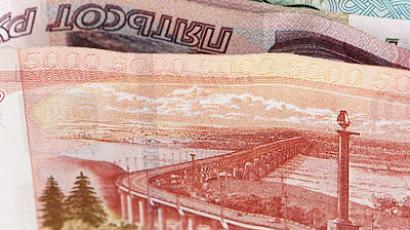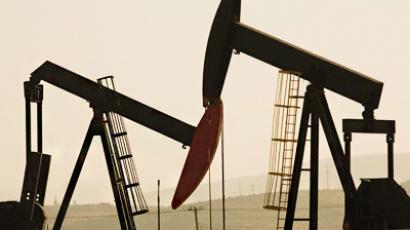The rouble in a sea of volatility
With the rouble reaching a 3 year high against the Euro-dollar basket on fears over prospects for the U.S. and European economies Business RT spoke with Evgeny Nadorshin, chief economist at Sistema Financial Corporation about the factors driving it.
RT: So what's behind this strengthening of the rouble?EN: “Frankly speaking, I wouldn’t call that enthusiasm to Russia or any threat from the events inEuropean or American economies. The situation looks like very simple. It looks like net private capital outflow has decreased in the second half of July and high oil prices pushed rouble up versus duo currency basket. It looks like the situation is more trivial – investors have not played yet their role in this movement of the currency.”RT: Where do you see the peak? What’s the highest level the rouble can go to?EN: “All things being equal, I expect that to happen between the first and the second half of 2012. So, between the second and third quarter, somewhere there roughly. It will be probably 26 roubles per dollar and about 31 versus duo currency basket.”RT: Is the strong rouble good for the Russian economy?EN: “If we speak about consumers and we speak short term, definitely, it’s good, because a lot of consumer goods are being imported. When you buy cheaper, you feel yourself more comfortable. We’ve already seen that after food stuff, like potatoes, started to enter the Russian market, we saw the local prices decreasing. And that trend that started in the beginning of 2011 continues to this moment pushing food stuff prices down, which is definitely comfortable for the consumers. We are also seeing that a more expensive rouble from the beginning of 2011 is mitigating local non food stuff prices growth, as far as goods are concerned. I’m not speaking about services but the prices growth of goods is mitigated by a more expensive national currency, which is also more comfortable for consumers. In the longer term, if local businesses will not be able to sustain expensive rouble, this may result in a higher levels of unemployment, unfortunately this may affect local output, and this may result in a less comfortable situation for the consumers with respect to their activity and their willingness to buy. ButI don’t think, we are now speaking about such a situation and I, don’t think, this is a great problem, especially taking into account that many other emerging market currencies are also becoming more and more expensive versus euro and dollar.”RT: Do you see a dollar rebounding if the US Government manages to raise the debt ceiling, as they’re trying to do now? EN: “Yes, it looks like all these debates that look like mostly political, I would say, yes – they frightened investors to some extent and pushed them out of the US currency. I don’t even doubt that the issue will be solved because no single party, there’s no single major power in the US that could benefit from the event of not increasing that ceiling.”RT: If we see the crisis in Europe and the U.S. continuing, do you think teh money will start flowing from the peripheral currencies, like the rouble or the Australian dollar?EN: “Yes, that has already been happening. And the countries that export raw materials have benefited a lot from the situation. In the beginning of the crisis there was a famous idea of de…. emerging markets versus developed ones. It didn’t work in 2008 and in the beginning of 2009 but it looks like emerging markets, developing countries are becoming less dependent on developed ones. They’re trying to diversify their export flows, they are trying to rely more on themselves, on their local demand, like China, for example,on their regional partners. We can provide the Chinese, Brazilian examples, Argentinean – they are trying to work more extensively, they are trying not to concentrate on developed markets only, as it was before the 2007 – 2008 crisis. And they are becoming less and less dependent on the situation in developed ones. They are becoming more comfortable in terms of their own development. Definitely, this will attract foreign capital from developed countries. Without any single doubt this has already been happening, this is happeningand this will be happening. And the only question whether Russia will be able to take its part of the stake, because unfortunately so far we have been loosing our capital, we’ve seen net private capital outflow for 9 consecutive months already or a little bit more, actually. I suspect, July 2011 also hasbrought us a net private capital outflow, a small one, but still.”














